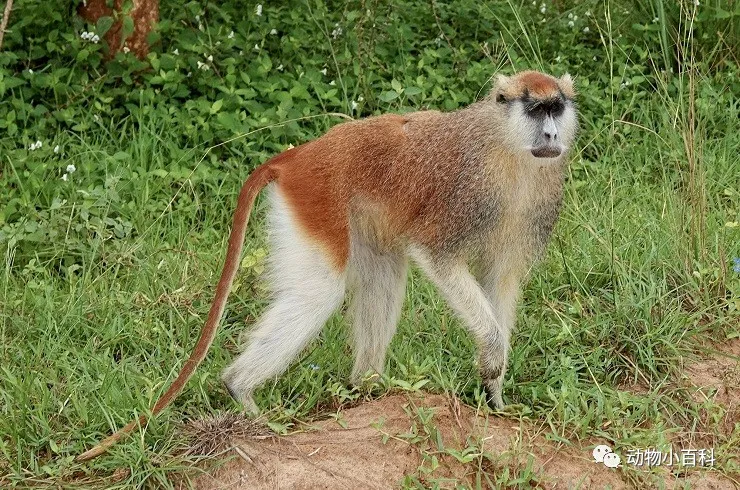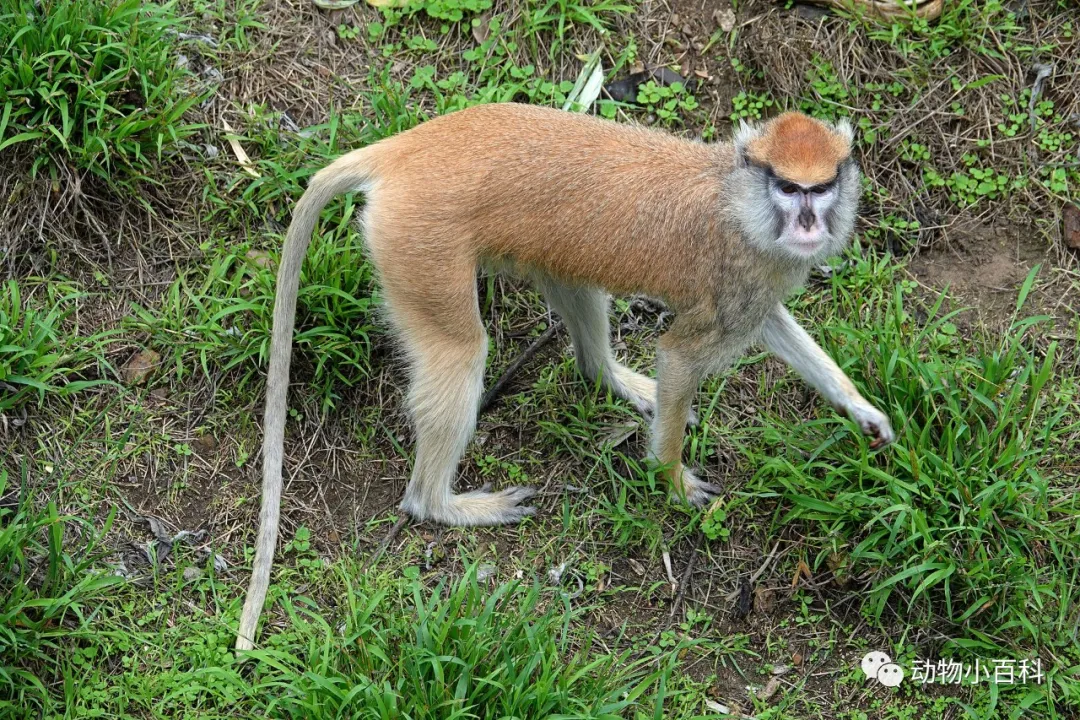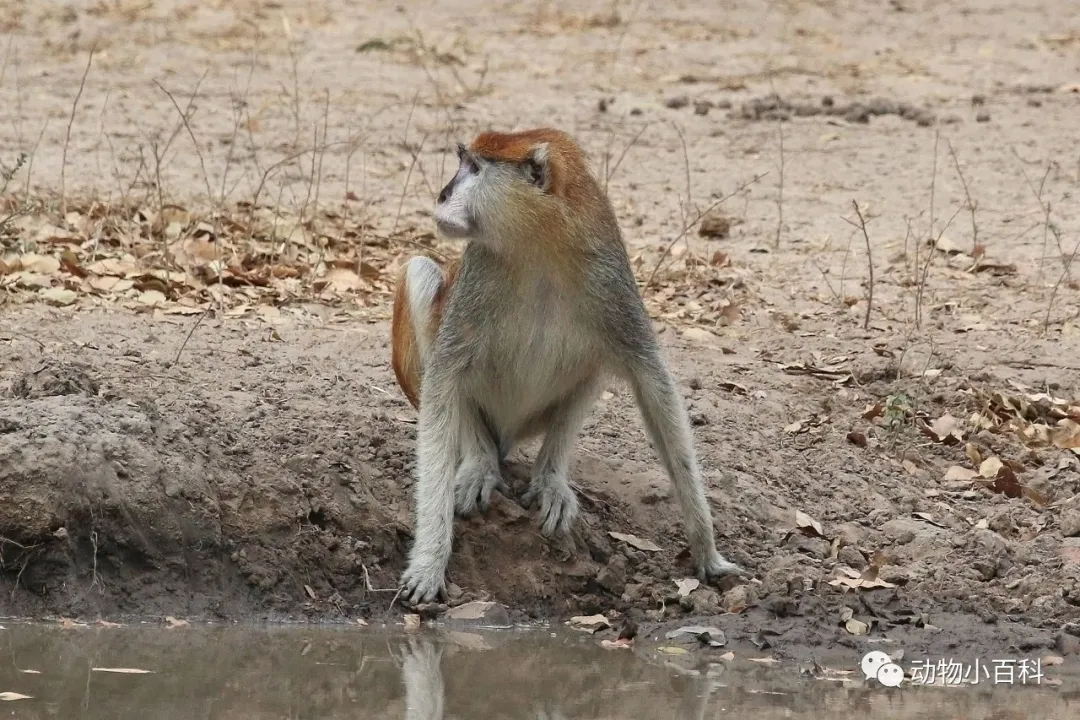The erythrocebus patas (scientific name: Erythrocebus patas) is found in grasslands and semi-desert areas from West Africa to East Africa. Unlike most other monkeys, erythrocebus live mainly in treed or densely forested areas. Instead, they prefer to live in open land.

Red monkeys have evolved a number of ways to survive on the open ground. They can run very fast, up to 34 mph (55 km/h) - making them the fastest primates on land, and when threatened they will climb trees to escape predators, but rely primarily on running speed.
Due to the dangers of living on the ground in Africa, they reproduce very quickly compared to other primates to offset their higher mortality rates.

The adult male Pata monkey has a shaggy coat, white whiskers and white underparts that set off its greyhound-like build. The female has similar, but less striking, patterning and build. It is about 50-70 cm long, not including the tail which is about the same length. Males weigh an average of 12.5 kg, while females weigh only 6.5 kg. What do Pata monkeys eat? Pata monkeys are omnivorous quadrupeds.

They have a variety of plant materials and animal prey in their diet. Patas usually feed on the following: leaves, flowers, fruits, seeds, geckos, chameleons, bird eggs, etc. They mostly eat in the morning and evening. They are very active during the day and rest when it is hot.
They usually live in a group consisting of one male and six females and their cubs. The dominant female leads the group, and the males are on the sidelines.

When a predator such as a cheetah is seen, males will make themselves conspicuous and eventually flee at high speed, drawing the predator away from the females and cubs hiding in the nearby long grass. Small single male troops constantly try to invade the breeding troop and mate with the females or drive out the male troops.
Single births occur during the rainy season, and the gestation period is estimated to be five to six months. The young monkeys develop quickly, with females maturing at three years old and males maturing at four years old, which is shorter than the maturity period of many small monkeys.
Red monkeys have a hierarchy, with female leaders who decide the activities of the entire group. Male red monkeys are mainly responsible for guarding. Young male monkeys leave the group when they reach sexual maturity (about 4 years old). They mostly live in groups, with a group of about 12 monkeys. The range of activity is about 45-50 square kilometers.

Except for resting and sleeping in trees, red monkeys spend the rest of their time on the ground. In order to escape the attacks of wild beasts, they have developed long-distance running skills and can run 50 kilometers in an hour. It's so fast. Red monkeys are an independent kingdom, and the king lives with his concubines. Male monkeys have large canine teeth and patrol around female monkeys. When they see an intruder, they open their mouths and show their big teeth to scare others.
In order to observe the situation in the distance, red monkeys often stand upright on their hind legs, with their tails as support, and stand on high places to look. When they find the enemy, they shout and order their wives and concubines to flee.
There can only be one male red monkey in a group, and there are 20 to 30 females. The status of females is also different, and they are divided into levels. That is, from the first wife to the second wife, the higher the official rank, the more powerful he is.
animal tags:
We created this article in conjunction with AI technology, then made sure it was fact-checked and edited by a Animals Top editor.